
Goodbye Horses is best known for its appearance in The Silence of the Lambs, used in the infamous scene of Buffalo Bill dancing in front of a mirror. But since then, it’s become a cult darkwave classic: moody, atmospheric, and totally unique.
In this article I’ll look at how the song was produced, and recreate the synthesizer sounds in order to explore how a few sparse layers, some minimal processing, and plenty of atmosphere can create something timeless.
Below you can watch my full remake of Goodbye Horses, based on the 7-inch version, which runs about 4 minutes and 20 seconds.
Written and produced by William Garvey and performed by Q Lazzarus (real name Diane Luckey), the track was recorded in the late 1980s after Q picked up filmmaker Jonathan Demme in her taxi and played him a demo tape during a snowstorm. Demme went on to use Q’s music in three of his films: Something Wild, Married to the Mob, and of course The Silence of the Lambs.
Goodbye Horses also appeared in Clerks II and Grand Theft Auto IV, and has been covered by artists including Psyche, MGMT, and Jon Hopkins in collaboration with Hayden Thorpe of Wild Beasts.
Both Garvey and Q Lazzarus were enigmatic figures. Q disappeared from the public eye before being tracked down by fans in 2018. She passed away in 2022, shortly before completing a documentary about her life, Goodbye Horses: The Many Lives of Q Lazzarus. Garvey died in 2009. He once explained that the song was inspired by the idea of leaving behind the five senses and “flying over” the physical world into something higher.

Goodbye Horses is one of those songs that doesn’t use chords, instead relying on single-note lines, resulting in a sparser overall sound. Most of the melodic content comes from three string synth parts, each playing C for two bars followed by E for two bars, for a four-bar loop.
The first string sound appears right at the start of the track, playing alone alongside the drums. It has a muted, dark tone and a swirling chorus effect. I recreated it using Arturia Jun-6 V with a single sawtooth oscillator, the filter set to 1.7 kHz, and the Chorus II effect enabled. There’s also some white noise in this patch; in my Jun-6 V patch I have the noise oscillator set to 4.
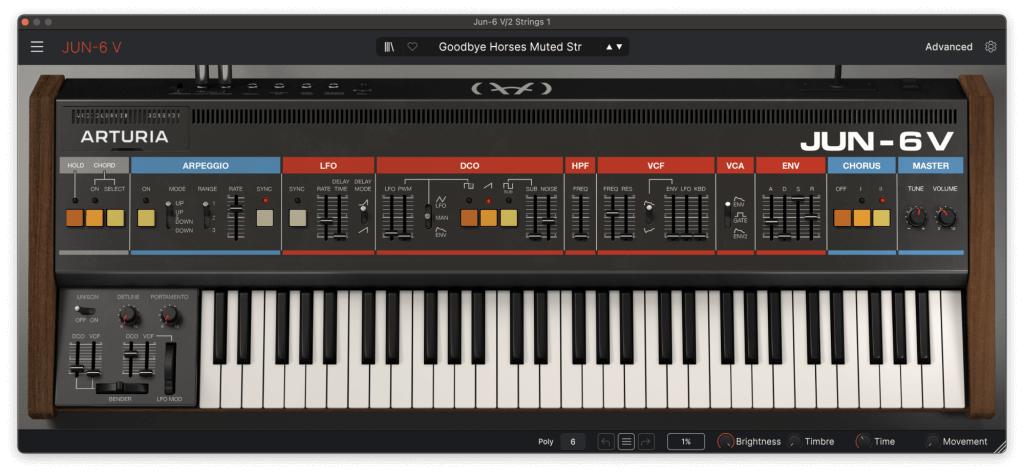
The second string patch plays the same notes, but an octave lower and with a descending melodic lead-in. It has a brighter sound, no chorus, and a distinctive vibrato. I recreated it in Arturia Prophet-5 V using the mod wheel to control the LFO, with the depth set to 0.056 and the rate at 5.74 Hz. Here’s what it sounds like:
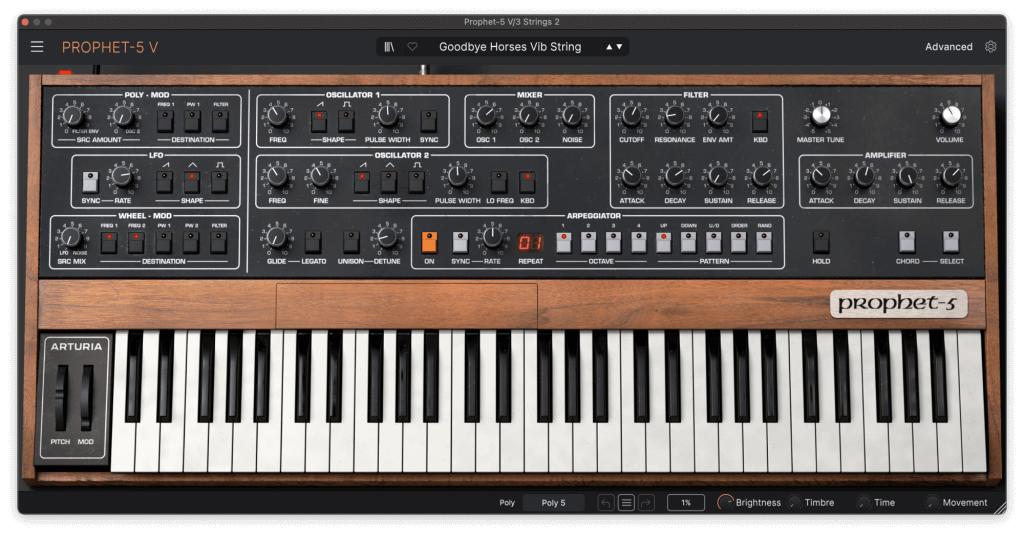
The third string patch is harder to hear, as it plays in the same octave as the muted strings and only appears during certain sections. It has a brighter, more atmospheric quality and a slower, pad-like envelope. I recreated it in Prophet-5 V with a lighter vibrato (mod wheel depth 0.032, LFO rate 3.56 Hz), and longer envelope settings: attack around 1 second and release around 2 seconds.
I didn’t add too many effects to these tracks, mostly just some light EQ and Soundtoys Decapitator to add saturation. The muted strings track is pretty crunchy-sounding, with the Drive in Decapitator set to 5. All tracks are also sent to a single instance of Valhalla VintageVerb on a return track.
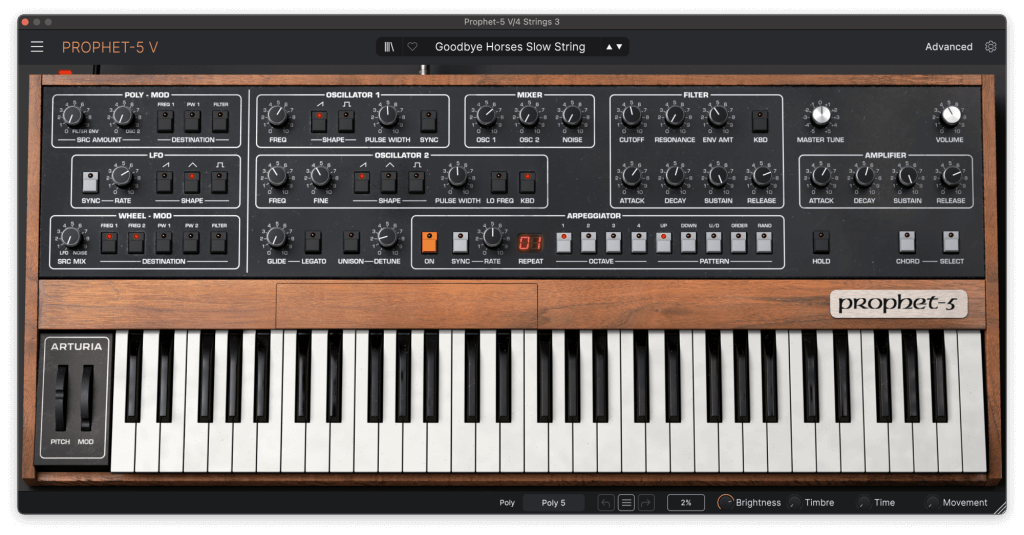
There are a couple of melodic lead sounds in Goodbye Horses. The first is a layered patch combining a vibrato sawtooth lead with an atmospheric choir sound. For the saw lead, I used mod wheel-controlled vibrato, bringing it in on the second note of each phrase.
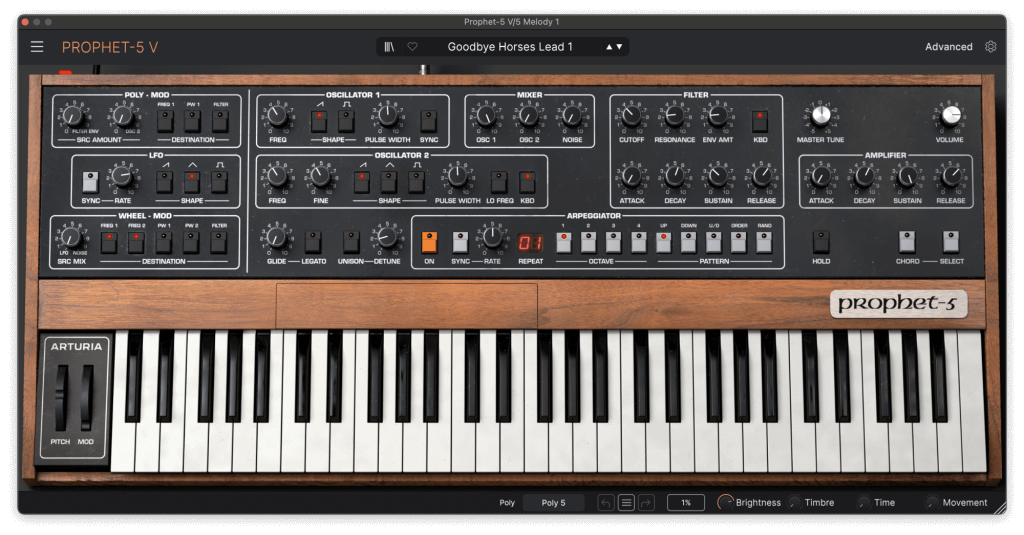
Some of the sounds in Goodbye Horses are unmistakably FM-based, likely coming from one of Yamaha’s DX-series synths. There’s no confirmed info about the gear used, but after trying patches from a range of FM synths, the closest matches I found were in the Yamaha FB-01, a small, inexpensive, multitimbral module from the late ’80s that essentially functions as eight 4-operator DX synths in a box.
For the airy choir-like lead, I used the 15 Organ patch from Bank 7, which despite the name sounds more like a choir than an organ. I imported the patch into Arturia DX7 V and added some ensemble chorus effect in Ableton Live. Here’s what it sounds like:
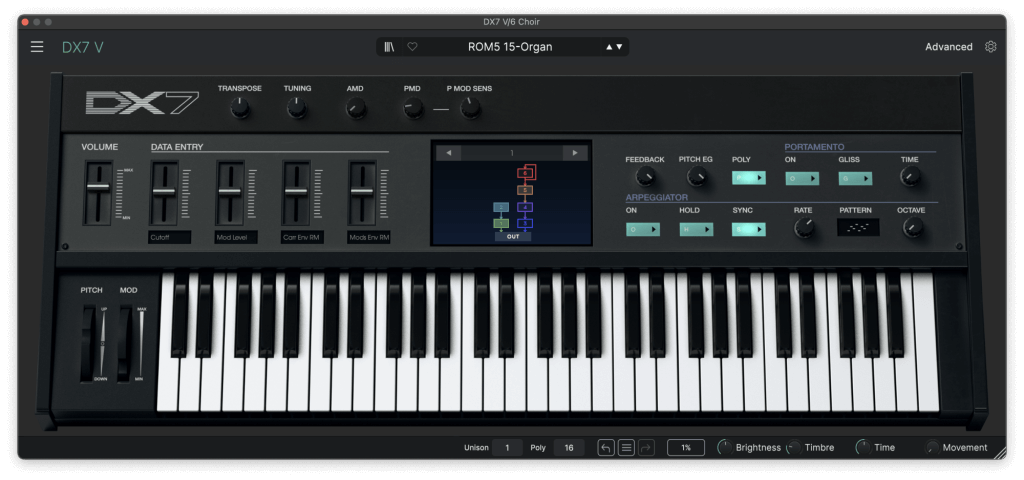
Later in the track, a plucked sound enters and continues through to the end. It’s a dead ringer for the FB-01’s 32 Pizzic1 patch from Bank 5, which I again imported into Arturia DX7 V. There’s a strong auto-pan effect on this track, which I recreated using Ableton’s Auto-Pan set to 100% amount, 1/4 note rate, and 80% shape for harder transitions.
To be clear, I can’t say for certain that the FB-01 was used on the original recording. Many Yamaha FM units from the era share similar sounds, and it could easily have been a DX21, DX100, or another budget 4-op synth. Regardless, Goodbye Horses seems to have been made using accessible, inexpensive equipment, reflecting how MIDI and affordable digital synths were starting to make music production more accessible in the late ‘80s.
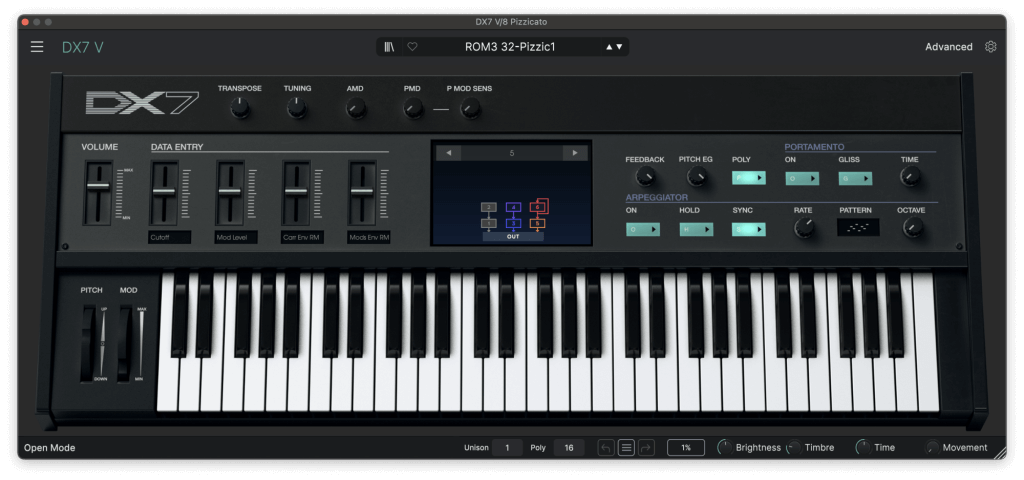
The bass in Goodbye Horses is a simple square wave with a dark-sounding pluck. In my Prophet-5 V patch, the filter is set to 77 Hz with a small amount of envelope modulation (2.39), and both envelope decays are set to 1.5 seconds with no sustain.
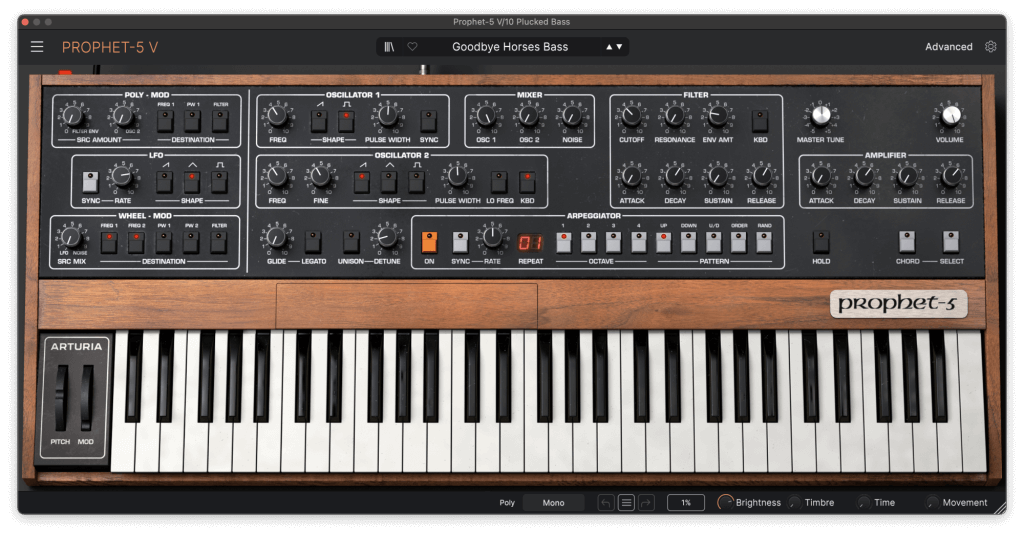
An FM organ doubling the bass line enters around 0:45 in the 7” version. I used the ROM1A 17-E.ORGAN 1 preset in Arturia DX7 V for this, though many DX organs sound similar, so this could’ve originally been an FB-01 patch too.
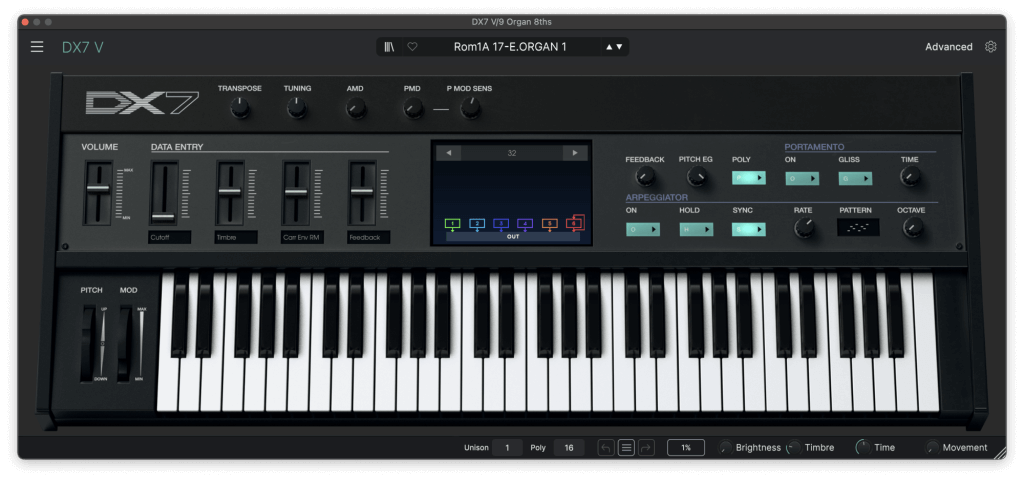
The Goodbye Horses snare is from the Linn 9000, which featured a built-in 32-track MIDI sequencer, so was possibly used to sequence the synth tracks.
Like most ‘80s songs, the drums have a lot of reverb, giving them a washed out sound. I also EQed the individual drum sounds to add high-end. You can compare my dry drum samples with the final, processed track below:

Quite 80’s. With a minimal beat. The background story is interesting; snowstorms are not always a horrible event.
Thank you.
Yeah, definitely a very stripped back beat, probably to do with it being easier to sequence single-lines rather than chords.